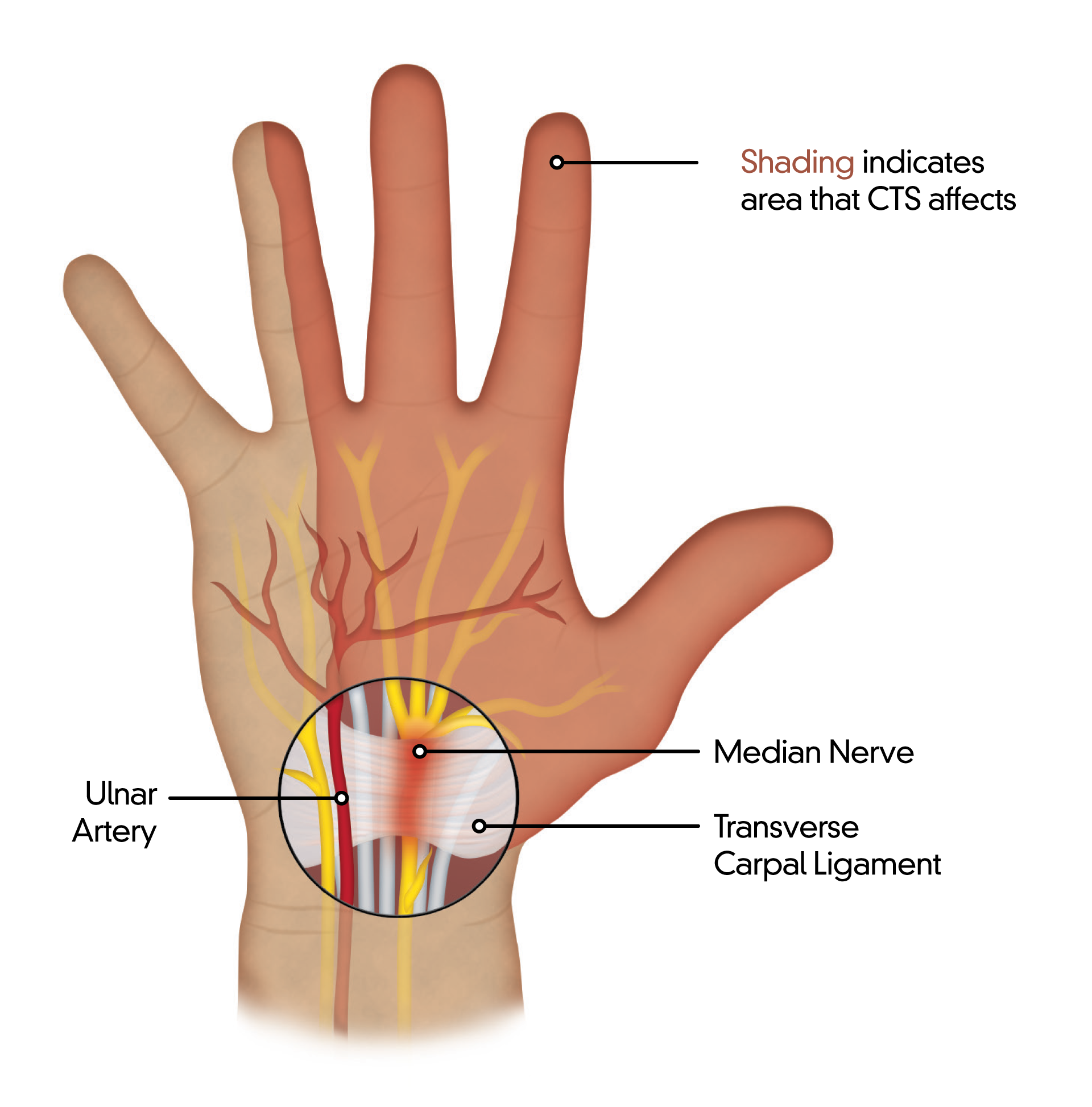Carpal Tunnel Syndrome

What is Carpal Tunnel Syndrome?
Carpal Tunnel Syndrome (CTS) is a common condition that causes pain, numbness, and tingling in the hand and arm. The condition occurs when one of the major nerves in the hand—the median nerve—is compressed as it travels through the wrist. The median nerve controls movement in the thumb and feeling in the thumb and first three fingers. It runs down the arm and forearm, passes through the carpal tunnel at the wrist, and goes into the hand.
Non-Surgical Treatments
Mild symptoms of CTS can be treated with directed home care, which may include specific exercises, stretching, avoiding activities that cause symptoms, or wearing a wrist splint. Medications or corticosteroid injections may also be recommended.
Surgical Treatments
More severe cases of CTS may be treated surgically through carpal tunnel release (CTR), which involves cutting the transverse carpal ligament to relieve pressure on the median nerve. Traditional CTR procedures can remedy the condition, but may result in large and sometimes painful scars, ongoing palmar pain, and a long road to recovery.4,5,6
Now there is an alternative surgical option—carpal tunnel release with UltraGuideCTRTM and real-time ultrasound guidance.
Get out of pain, back to work, and back to life!
CTR with ultrasound guidance relieves the symptoms of carpal tunnel syndrome while minimizing recovery time. Most patients can return to work and the activities they love in 3-6 days.4,9
Performing CTR with ultrasound guidance allows most patients to enjoy immediate motion so they can focus on getting back to their lives and the activities they love.4,9,10 If you have carpal tunnel syndrome and are considering a surgical procedure, CTR with UltraGuideCTR and ultrasound guidance may be right for you.

A small incision, typically closed without sutures

Benefits 4,9,10
I was back to work the next day.
-Dusuba S. | Patient





